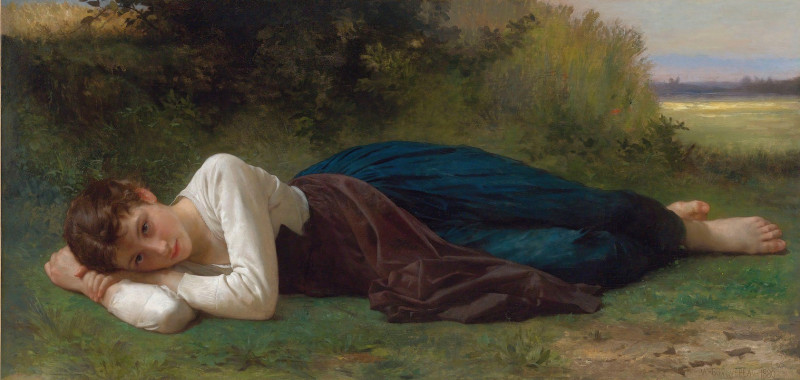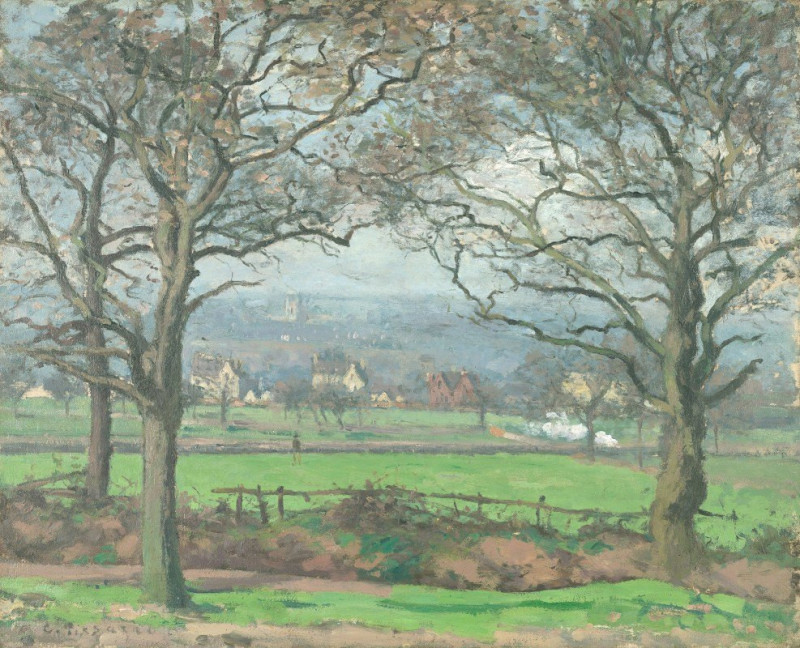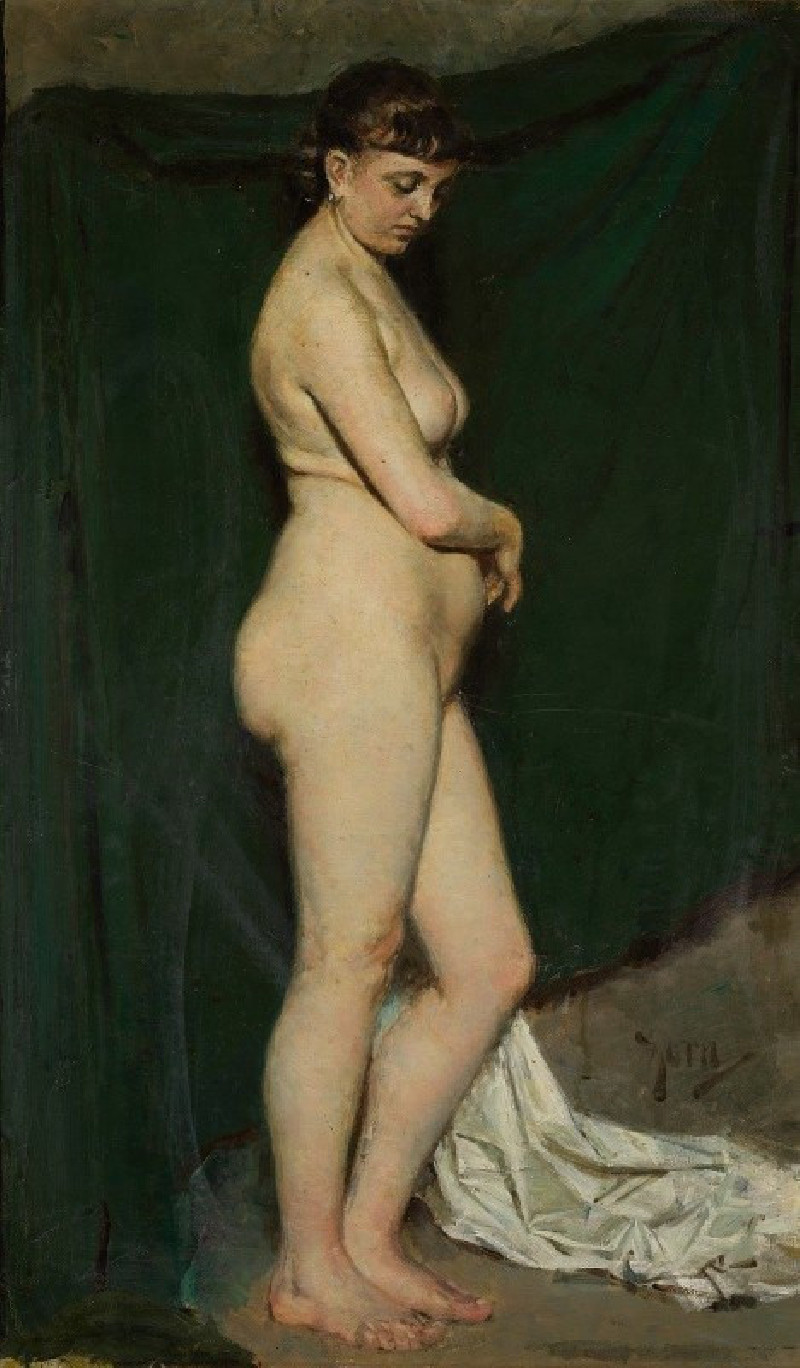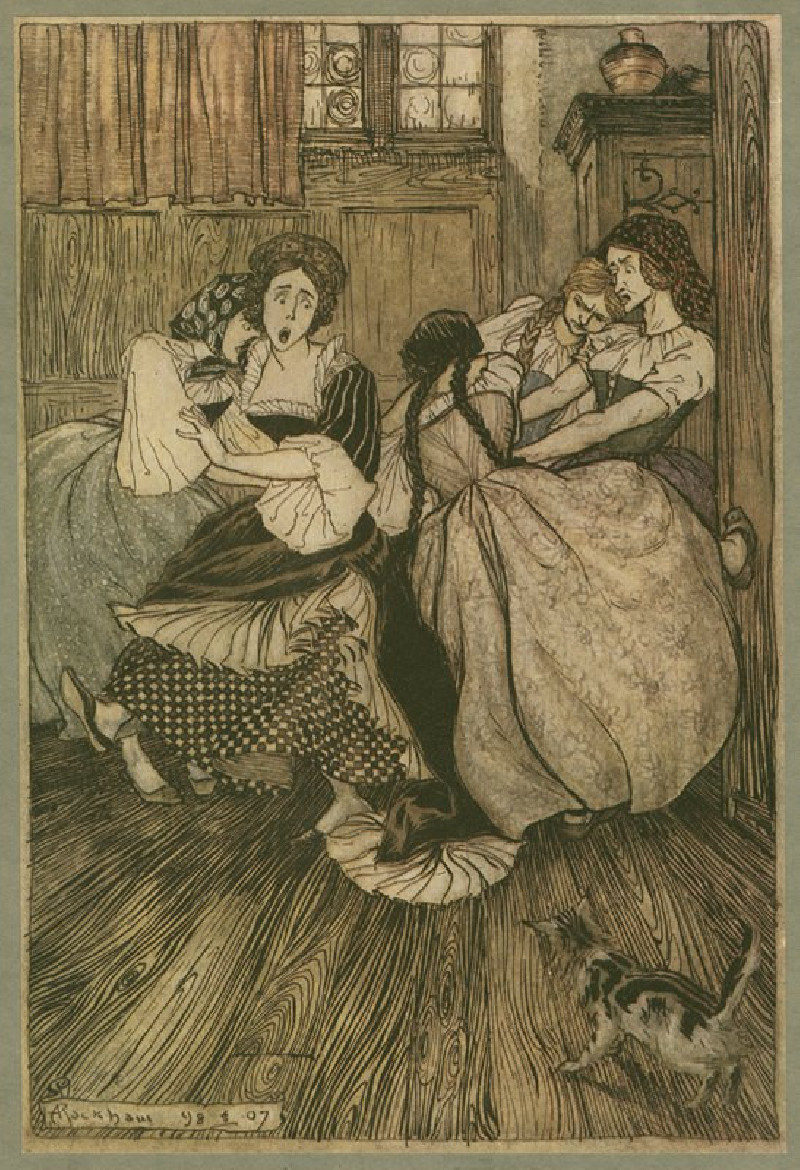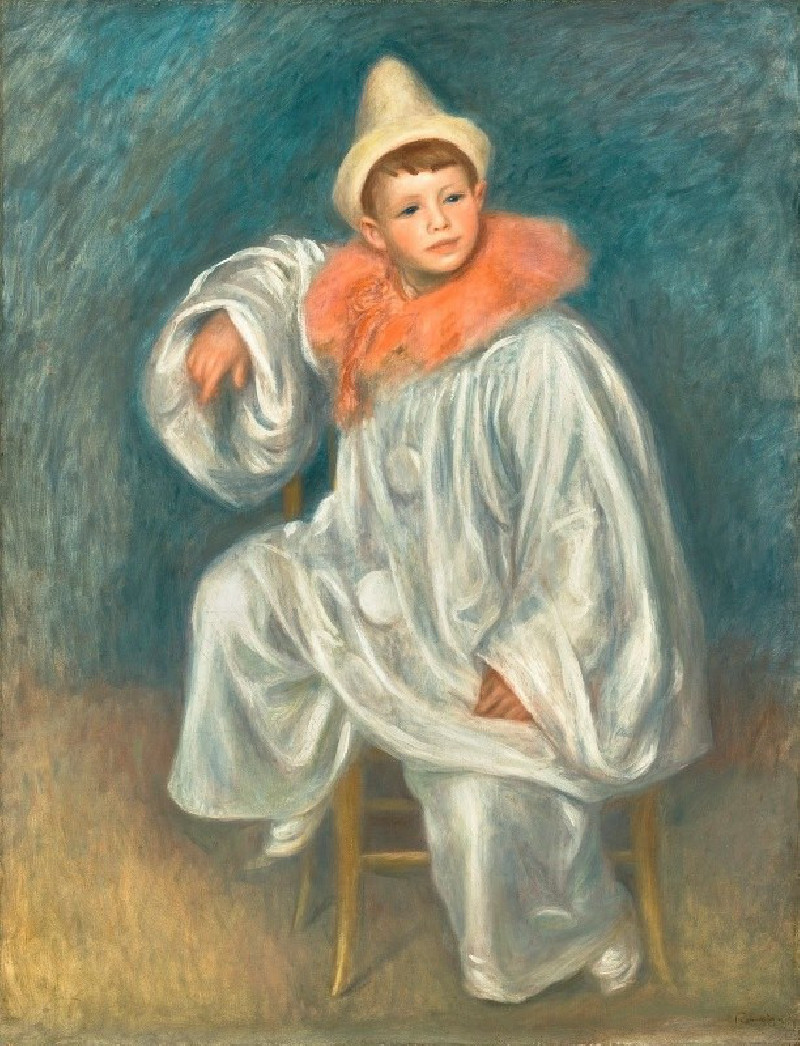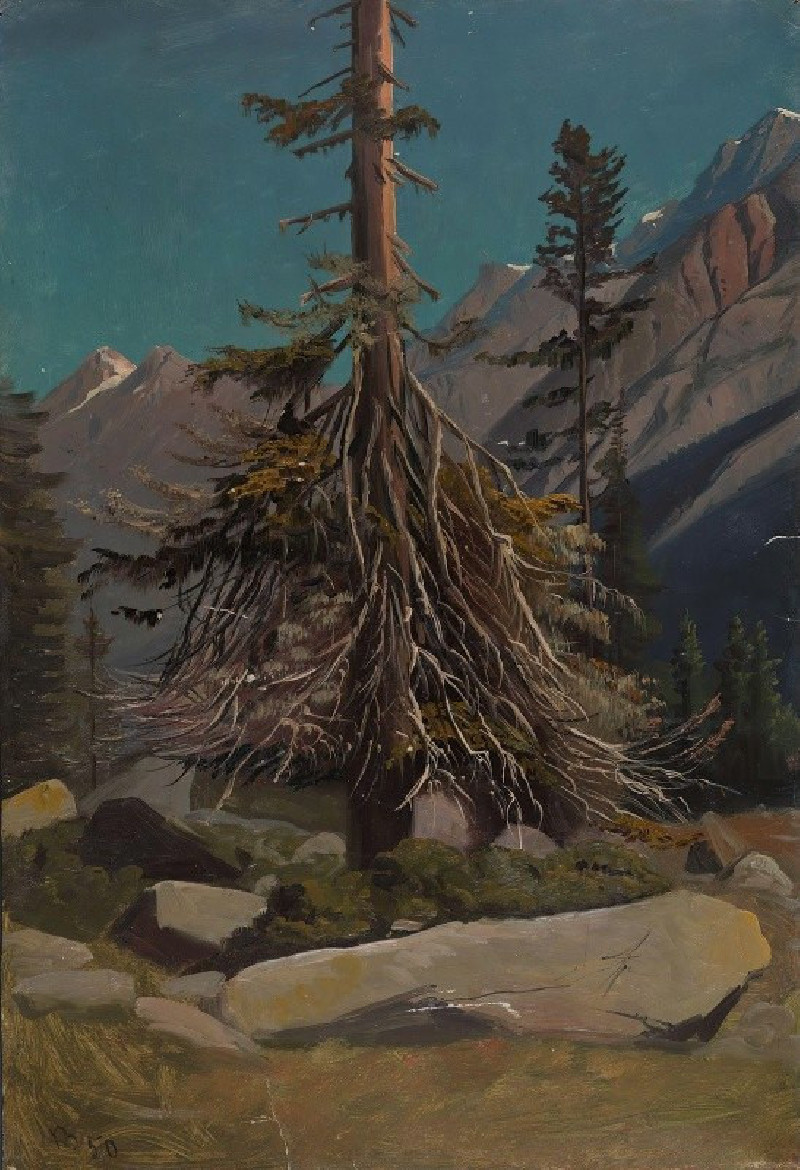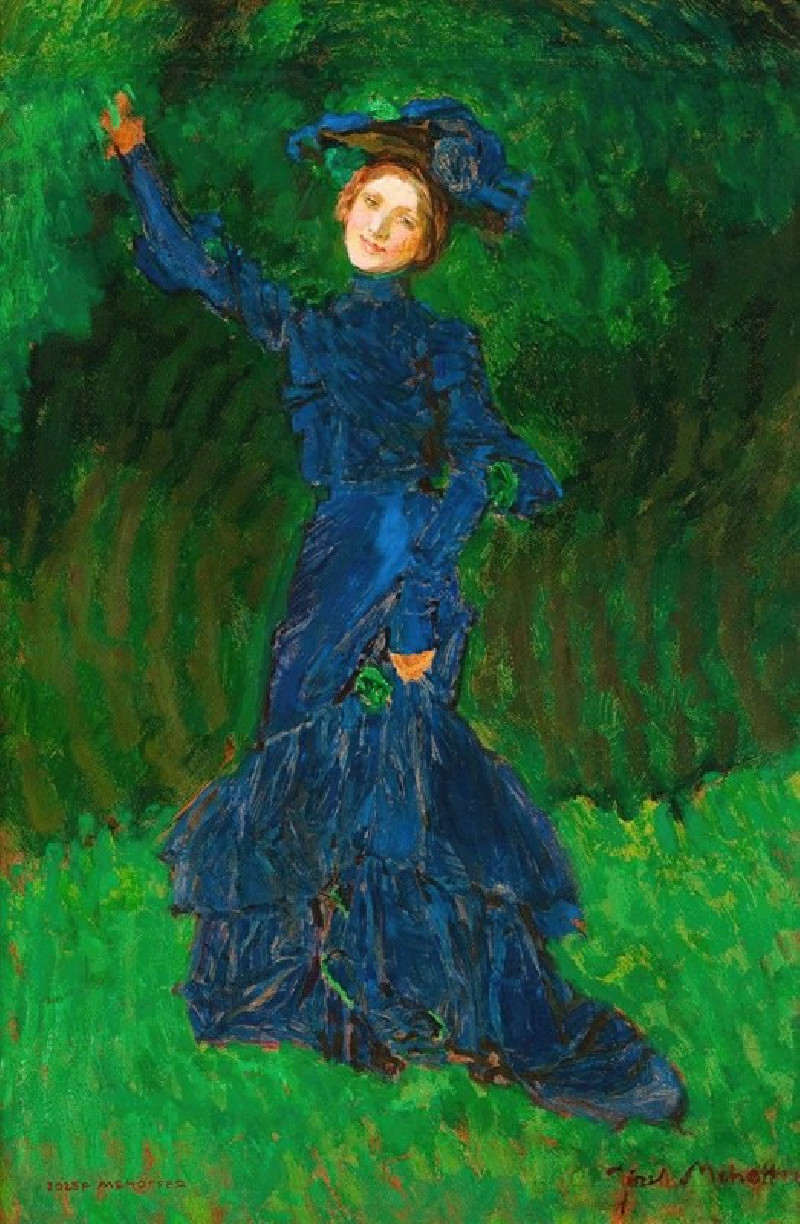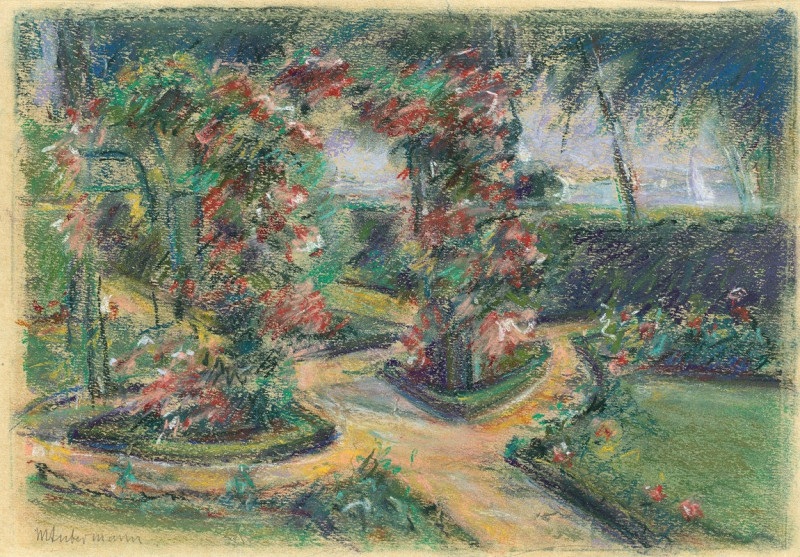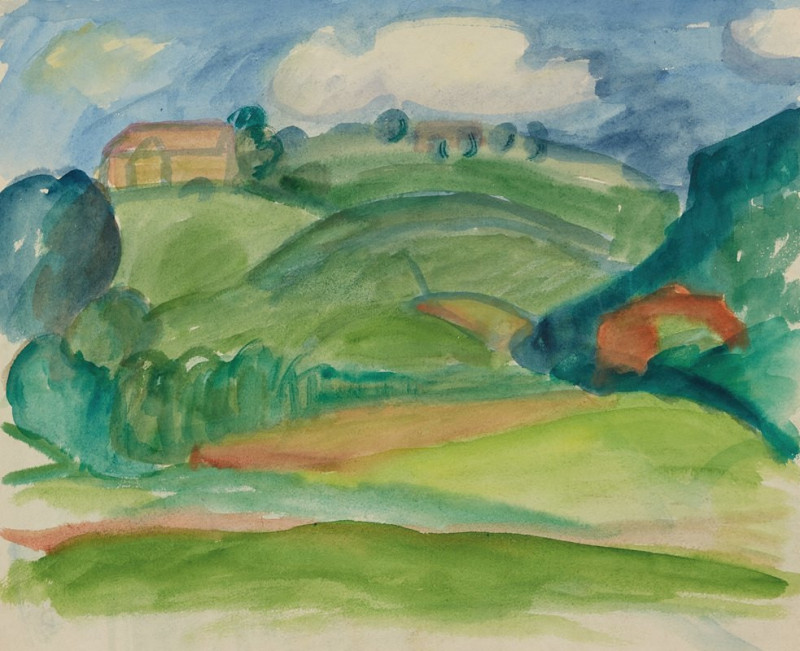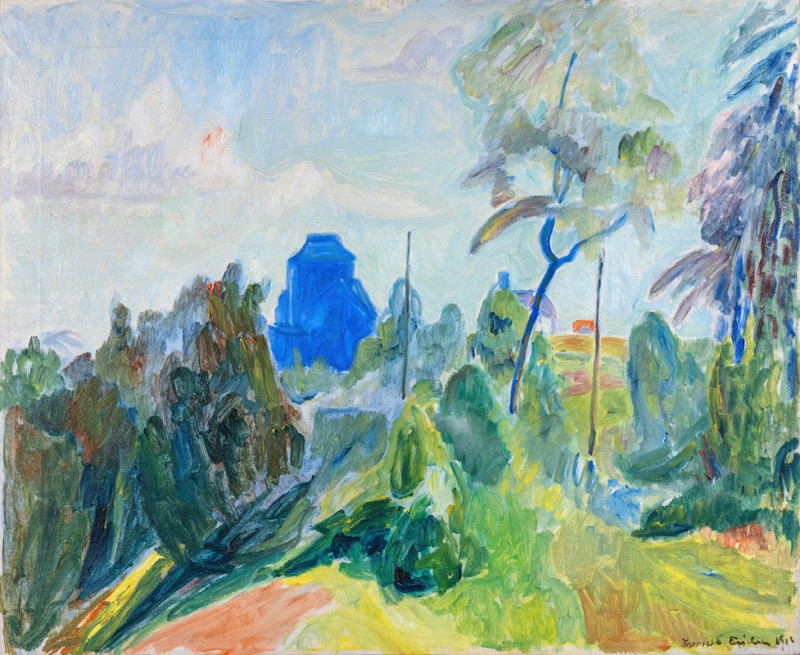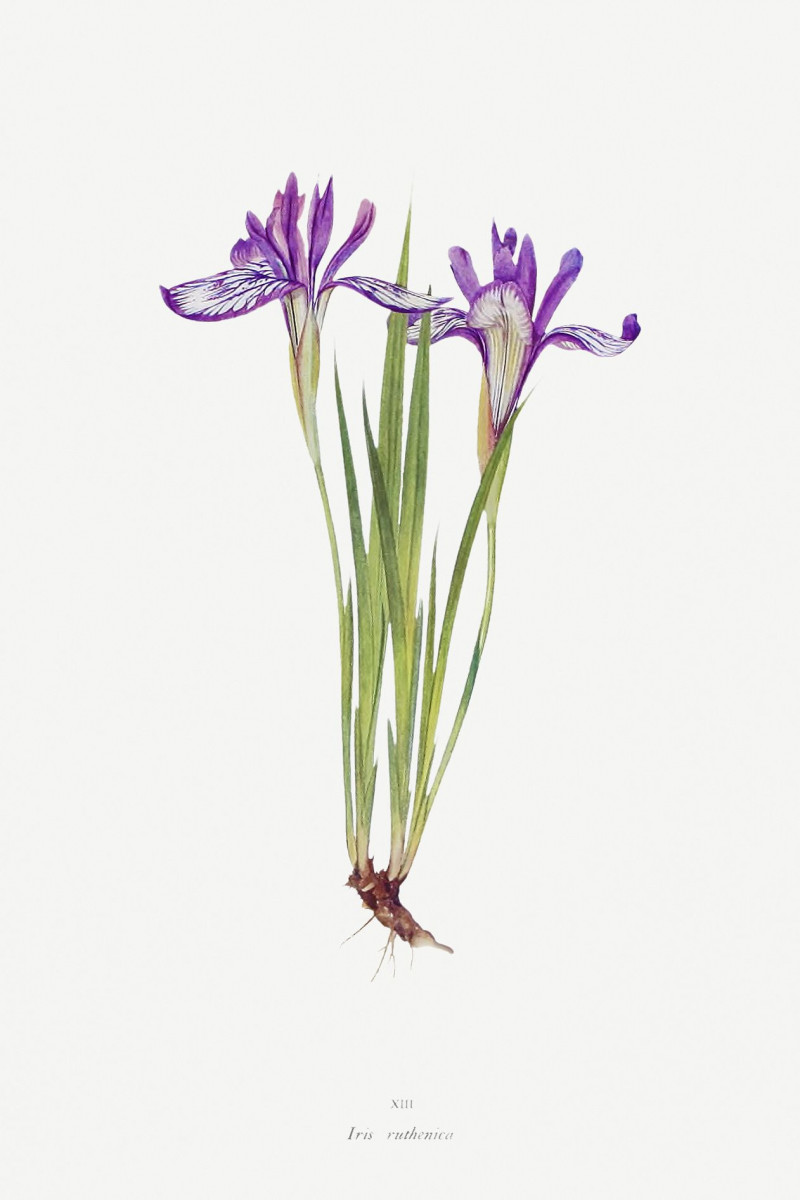Pflanzen Bild 8.B, 1925 (1925)
Technique: Giclée quality print
Recommended by our customers
More about this artwork
Welcome to our exploration of "Pflanzen Bild 8.B, 1925" by the eminent Swiss-German artist Paul Klee. This painting, created in 1925, invites viewers into a fantastical realm where the boundary between the botanical and the ethereal blurs.In "Pflanzen Bild 8.B," Klee demonstrates his mastery of color and form to depict a surreal plant-like vision. The composition is layered with intricate lines and textured brushstrokes that create a dynamic interplay of shapes and shadows. The central figure in the artwork, which could be interpreted as a whimsical floral entity, possesses eyes, giving it a face-like appearance that suggests animation and personality. This central motif is surrounded by what appears to be fluttering petals and leaves, each detailed with meticulous strokes and subtle color shifts.The color palette of the painting is predominantly cool, with blues and greens accented by touches of pink, suggesting a vibrant yet harmonious natural environment. The use of overlapping translucent forms contributes to a sense of depth and complexity, inviting viewers to delve deeper into the composition to uncover its myriad details and interpretations."Pflanzen Bild 8.B" is a quintessential example of Klee's ability to transcend traditional artistic boundaries and evoke imaginative landscapes. This piece, like much of his work, operates at the intersection of abstraction and figuration, challenging viewers to see the natural world through a lens of whimsical distortion and poetic creativity.This painting not only showcases Klee's unique style but also offers a glimpse into his philosophical exploration of the natural world, making it a captivating study for art lovers and newcomers alike.
Delivery
Returns
Paul Klee was a Swiss-born German artist. His highly individual style was influenced by movements in art that included expressionism, cubism, and surrealism. Klee was a natural draftsman who experimented with and eventually deeply explored color theory, writing about it extensively; his lectures Writings on Form and Design Theory (Schriften zur Form und Gestaltungslehre), published in English as the Paul Klee Notebooks, are held to be as important for modern art as Leonardo da Vinci's A Treatise on Painting for the Renaissance.

































